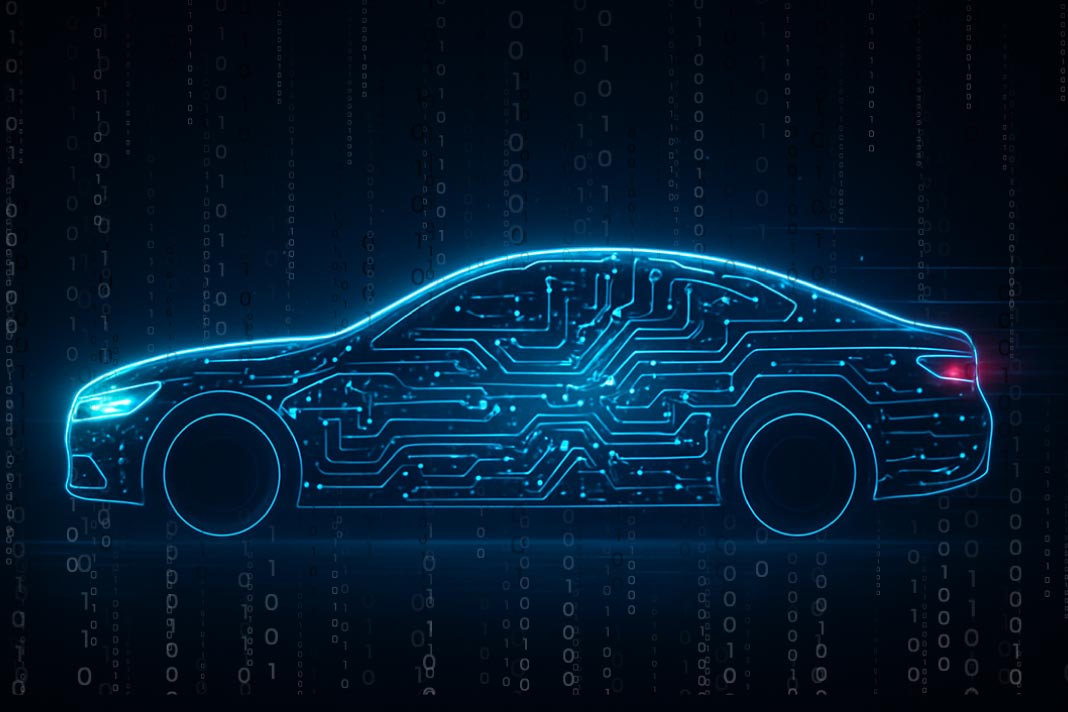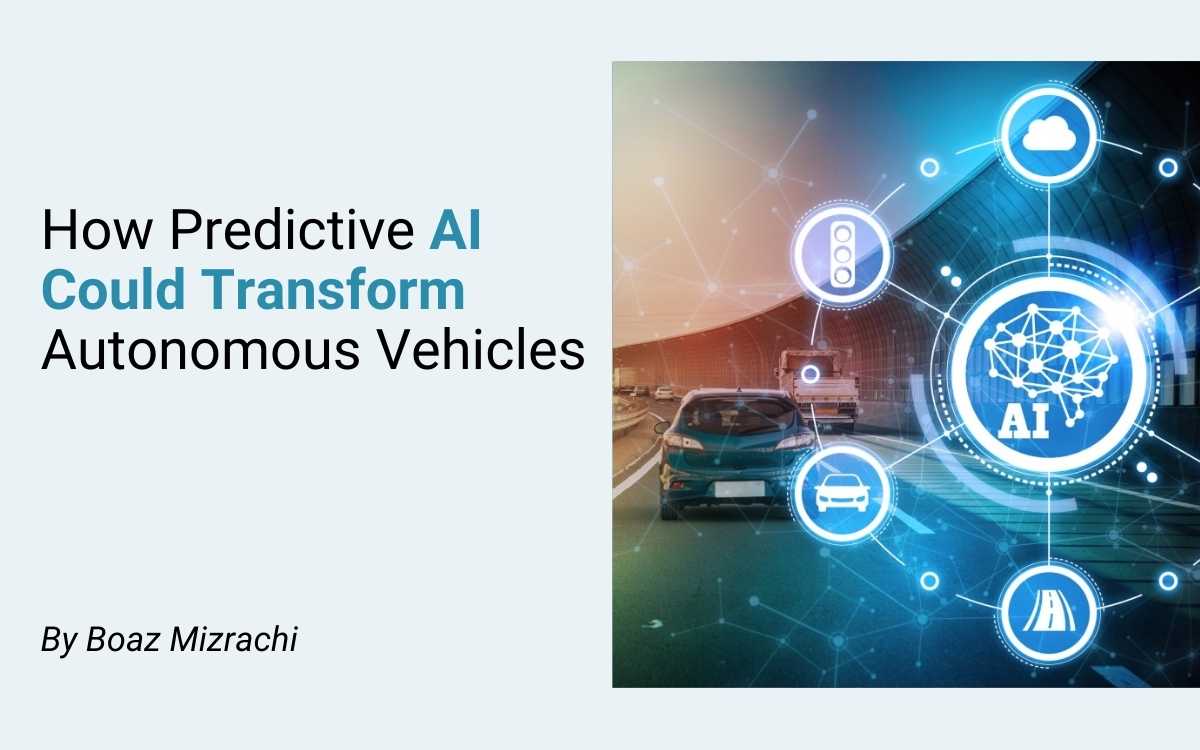An Interview With David Leichner
The automotive industry has been disrupted recently with new exciting technologies that have made cars and trucks much smarter, much safer, and much more sustainable and more environmentally friendly.
What other exciting disruptive technologies will we see in the next few years? How much longer will fossil fuel powered cars be produced? When will we see fully autonomous vehicles? Can we overcome the challenge of getting stuck in traffic? As cars become “moving computers”, do we have to worry about people hacking our cars? How else will our driving experience be different over the next five years? To address these questions, Authority Magazine started a new interview series about “Exciting Leading Edge Technologies That Are Making Cars & Trucks Smarter, Safer, and More Sustainable.” In this series we are talking to leaders of automotive companies, automotive tech companies, EV companies, and other tech leaders who can talk about the vehicles of the future. As a part of this series, I had the pleasure of interviewing Boaz Mizrachi.
Boaz Mizrachi is the CTO and Founder at Tactile Mobility. Boaz is a veteran technologist and entrepreneur, holding over three decades of experience in signal processing, algorithm research, and system design in the automotive and networking industries. He also brings hands-on leadership skills as the co-founder and Director of Engineering at Charlotte’s Web Networks, a world-leading developer and marketer of high-speed networking equipment (acquired by MRV Communications), and as System Design Group Manager at Zoran Microelectronics (acquired by CSR).
Thank you so much for joining us in this interview series! Before we dive in, our readers would love to “get to know you” a bit better. Can you tell us a bit about your ‘backstory’ and how you got started in the automotive industry?
My path to the automotive industry wasn’t direct or expected. I began my career in the tech and networking industries, where I co-founded Charlotte’s Web Networks, a company that developed high-speed networking equipment. It was an interesting journey, and we learned about data systems, signal processing, and how to optimize hardware and software for maximum efficiency. Over time, I became more interested in how these concepts could be applied in new industries. The automotive world intrigued me because I saw an opportunity to bring that same kind of innovation to a completely different field.
Can you share the most interesting story that happened to you since you began your career?
One of the most interesting stories from the early days of my career happened when we started working with fleets of heavy trucks to explore how we might better measure and reduce the amount of fuel they were using on a daily basis. We quickly discovered a major problem: the onboard estimators for fuel consumption, which truck owners and fleet managers relied on, were wildly inaccurate and regularly off by 30 percent or even more.
Because of the inaccuracy, some fleet managers believed a truck idling consumed about 10 liters of fuel per hour. Considering many private cars run about two liters per hour when idling, you can imagine those managers were worried about the expense and environmental impact of idling, so they implemented strict policies to curb idling time. Drivers would receive calls from supervisors, sometimes just minutes after stopping, ordering them to shut off their engines. That in turn meant losing air conditioning or heat, which caused a lot of discomfort to drivers who were already spending long hours on the road and then waiting in extreme weather conditions while their trucks were being unloaded and loaded. Trucking is already an industry with high turnover, and the policies just made working conditions even worse and created unnecessary stress.
To prove the faulty data wrong, we conducted an experiment. We idled six heavy trucks for an hour and used the in-vehicle sensors coupled with our software to get more precise measurements. Instead of 10 liters, the trucks consumed closer to one liter per hour. This filled a real need because having the right data meant managers could develop more reasonable policies that prioritized driver comfort.
Ok wonderful. Let’s now shift to the main focus of our interview. Can you tell our readers about the most interesting projects you are working on now?
Right now, Tactile Mobility is refining our virtual sensor technology to offer more in-depth analyses of a vehicle’s performance on the road in real-time. By collecting data from existing vehicle components, our software can generate insights that determine road conditions and adjust the vehicle’s systems accordingly.
We’re excited about how this data can enhance vehicle safety by feeding real-time information to features like adaptive cruise control, anti-lock brakes, and even predictive maintenance alerts. The fact that we can make roads safer by improving vehicle response without adding new physical hardware is pretty groundbreaking.
How do you think this might change the world?
I think the impact could be profound. Imagine a future when cars equipped with Tactile Mobility technology automatically adapt to road conditions to prevent accidents, optimize fuel consumption, and even report road hazards in real-time to municipalities. This could reduce the risk of weather-related crashes, save lives, and lower maintenance costs for both individual drivers and fleet operators. In the long term, this technology could even enable roads to communicate with vehicles about upcoming conditions or traffic issues, creating a collaborative, safety-driven ecosystem.
Keeping “Black Mirror” in mind, can you see any potential drawbacks of this technology that people should think more deeply about?
First, there’s the issue of data privacy. As vehicles become smarter, they gather more information, including where you live, how you drive, where you travel. If bad actors intercept this data, they can misuse it in harmful ways, like identifying sensitive habits or even framing someone for an offense. Additionally, governments or law enforcement could compel companies to hand over this information, which naturally violates the trust between drivers and the system. To address this, we focus on anonymizing the data collected, fragmenting it into untraceable pieces so it can’t be linked back to an individual or a specific vehicle.
The second concern revolves around system safety. People are naturally worried because they’re used to old-fashioned mechanical systems in which steering was entirely under the driver’s control. Today, there’s a layer of software mediating these functions, which introduces risks. Even minor software bugs can have major consequences, let alone something like a major cyber attack aimed at vehicle systems. To mitigate this, we ensure that drivers always have the ability to override automated systems. For instance, if lane-keeping technology fails to recognize markings correctly, a small torque applied by the driver can immediately override the system.
What are a few things that most excite you about the automotive industry as it is today? Why?
The rise of connected vehicles is one of the most exciting developments — I’m excited by the prospect of both vehicle-to-vehicle (V2V) and vehicle-to-everything (V2X) communication. It’s pushing every company in the industry to innovate and collaborate on data collection and real-time transmission. We are collectively working towards vehicles communicating with one another and with traffic infrastructure.
What are a few things that most concern you about the automotive industry as it is today? What must be done to address these challenges?
Autonomous technology is developing rapidly, but it’s crucial that we don’t rush it. We need comprehensive testing and regulatory frameworks to ensure safety. There’s also a concern around data: who owns it, how it’s used, and how it’s protected. The industry must work together to create standards that protect individuals’ privacy while enabling the safe, efficient use of data.
Based on your vantage point as an insider in the automotive industry, what other exciting disruptive technologies will we see in the next few years? Can you share some of the new developments that will make vehicles smarter, safer, and more sustainable?
Beyond connected and autonomous vehicles, I think we’ll see a major focus on vehicle-to-everything (V2X) technology, in which cars communicate not only with each other but also with traffic lights, infrastructure, and even pedestrians. This could dramatically reduce accidents and congestion. Additionally, we’ll see advances in EV battery technology, making electric cars more affordable and extending their range.
In your opinion, how much longer will fossil fuel powered cars be produced? When do you think EVs will be the majority of vehicles in use? Can you explain?
It’s tough to predict an exact timeline, but I believe we’ll see a significant shift within the next 10 to 15 years. The push toward greener alternatives is strong, especially in Europe and China, and the US is catching up. As battery technology improves and costs come down, EVs will become more accessible. Eventually, fossil fuel vehicles will be phased out in most markets as EVs become the more practical and sustainable option.
When do you think we will see fully autonomous vehicles deployed in a mainstream way? What do you think are the main barriers to reaching that stage?
There are basically six levels of autonomy that we measure when we’re talking about self-driving cars, with zero being the lowest. Fully autonomous vehicles, at Level Five autonomy, where they can handle all driving tasks under any conditions without human intervention, are still decades away from mainstream deployment. In my view, we are likely looking at several tens of years before they become a common sight on roads. While we have made incredible progress with Level Three and some Level Four systems, which allow vehicles to operate autonomously in specific conditions, there are significant barriers to reaching full autonomy.
The first major barrier is safety and decision-making. Autonomous vehicles need to not only see and interpret their surroundings accurately but also make split-second decisions based on those interpretations. Current systems struggle with complex environments, adverse weather, and unpredictable human behavior.
The second barrier is how consumers perceive these systems. Autonomous systems must be exponentially safer than human drivers to gain public trust. Even a small bug or miscalculation in the software can lead to catastrophic consequences. People are far less forgiving of errors from a machine than from a human, even if the overall safety record of the system is better. Building this level of reliability will take years of refinement and extensive real-world testing.
How else will our driving experience be different over the next five years?
In the near future, I think we’ll see cars that feel much more like personal assistants. Vehicles will predict maintenance needs, adjust performance to road conditions, and sync seamlessly with your devices. We’re moving toward a driving experience where the car is constantly learning and adapting, making for a smoother, safer ride.

What are your “5 Things You Need To Create A Highly Successful Career In The Automotive Industry?
- Curiosity: The automotive industry is constantly evolving. To thrive, you need a genuine curiosity for learning. My experience with signal processing, for example, led me to explore its applications in vehicles, which is how Tactile Mobility began.
- Adaptability: The challenges we face aren’t static; they evolve as technology changes. Adapting to new developments has been crucial for me, whether it’s the shift to connected cars or advances in AI.
- Vision: You need to see not just where the industry is but where it’s going. Creating virtual sensors wasn’t just about today’s vehicles but imagining how this technology would shape the future of driving.
- Collaboration: Automotive technology is highly interdisciplinary. My work has required collaboration with experts in everything from AI to cybersecurity, and having that collective expertise has been essential.
- Resilience: It’s a challenging field, filled with long development cycles and high safety standards. Persistence is key. For example, early on we wanted to integrate our AI technology into the vehicle’s engine control units (ECUs), which were extremely limited processing power and memory. Fitting advanced machine learning models into a few tens of kilobytes required us to completely rethink our approach, optimizing every aspect of the software to operate efficiently without compromising accuracy or functionality. Despite the difficulties, this process led to a breakthrough — a lean, AI-powered system operating more efficiently than ever before.
You are a person of great influence. If you could inspire a movement that would bring the most amount of good to the most amount of people, what would that be? You never know what your idea can trigger. 🙂
I would encourage a global movement toward “safe mobility.” A large part of this would be advancing the adoption of technologies that make roads safer, reduce accidents, and ensure that everyone — drivers, passengers, and pedestrians — can feel secure on the road.

Posted originally on Authority Magazine


